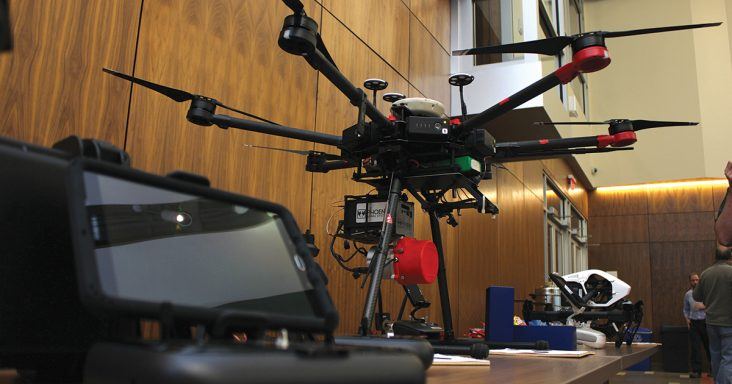University of Arkansas hosts 3rd drone summit
by March 27, 2019 1:09 pm 538 views

About 100 people attended the third annual Arkansas Drone/Unmanned Aircraft Systems Summit on March 12 in Little Rock and Fayetteville. Drone experts discussed compliance with Federal Aviation Administration rules, homeland security regulations and how drones can help in research and emergency response.
The University of Arkansas hosted the summit attended by researchers, commercial users, public safety workers, military personnel and hobbyists, said Jason Tullis, professor for the geosciences department and the Center for Advanced Spatial Technologies at the UA. Tullis works with Richard Ham, assistant director of the Master of Science in operations management and engineering management programs, who leads the UA’s drone program.
Tullis spoke about the waiver the UA received to fly drones at night. Existing federal rules restrict drone use at night, but Tullis said changes are in the works that could allow people to fly them at night.
In another presentation, Jay McEntire, co-founder and CEO of machine learning startup Arva Intelligence, discussed how it uses drones to gather data on farms and the technology it’s developing to decrease costs between $20 and $40 per acre while maintaining existing crop yield.
The idea would be to eliminate the unnecessary amount of fertilizers by applying them only where they are needed while looking at seed and biological applications in the appropriate environment.
“We’re not targeting a yield bump as much as we are maintaining yield and reducing the input cost to get the same yield or better,” he said. This year, the company will develop intelligence and inside strategy and work with manufacturers and seed companies. Arva is developing technology for the companies to use its data to recommend the appropriate products to farmers.
“There’s a limited number of machine learning experts,” McEntire said. “And then you are limited to what do they know. So the key is can we build this machine learning technology and license that to providers in the industry.”
